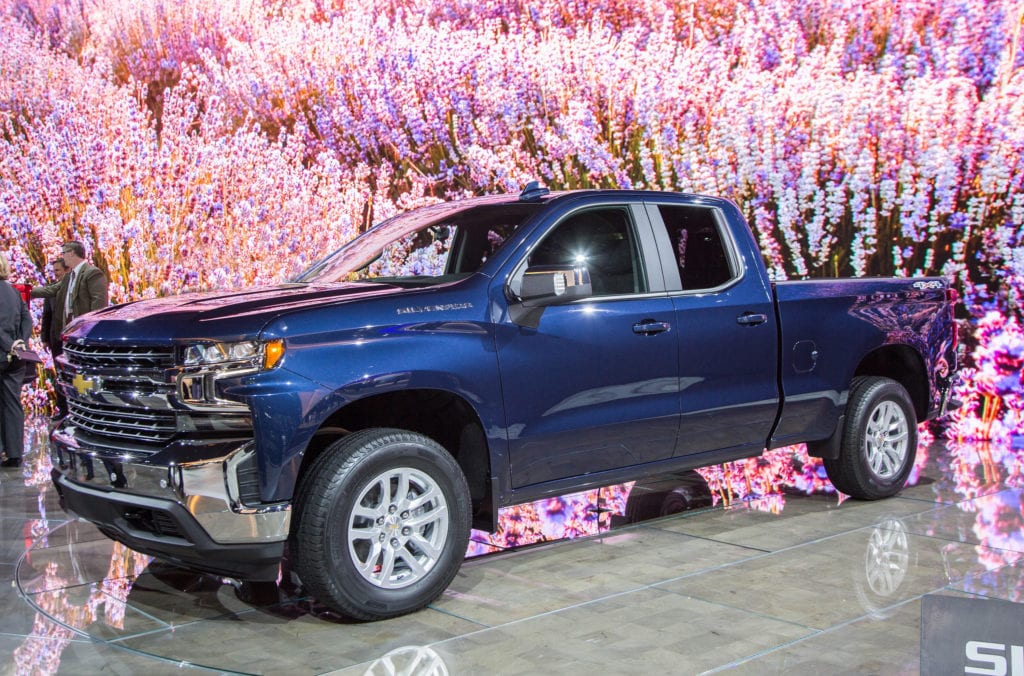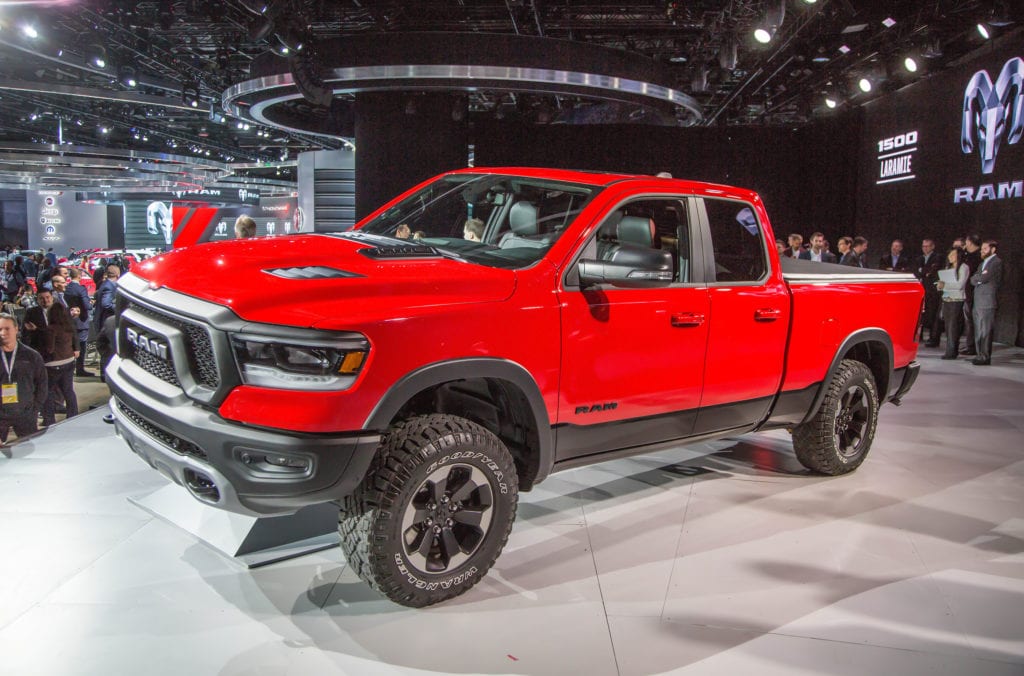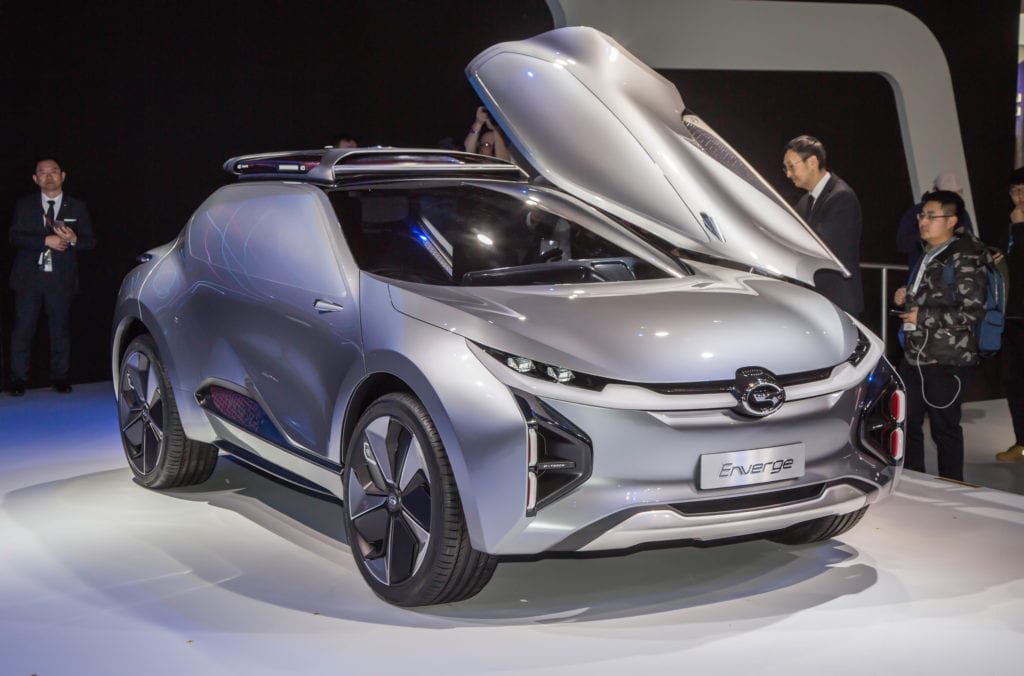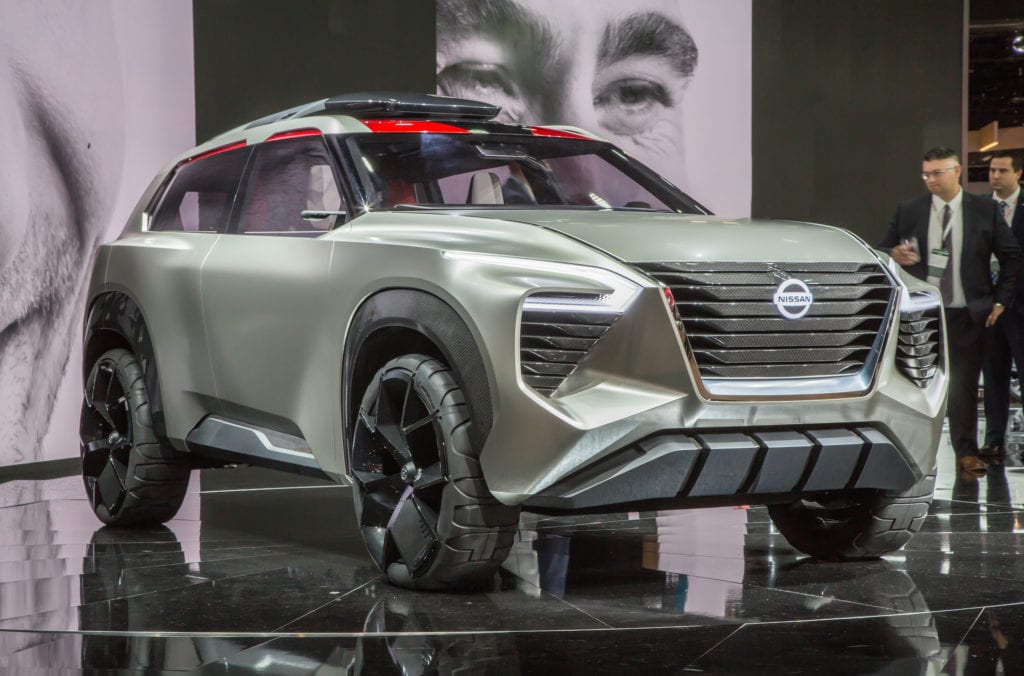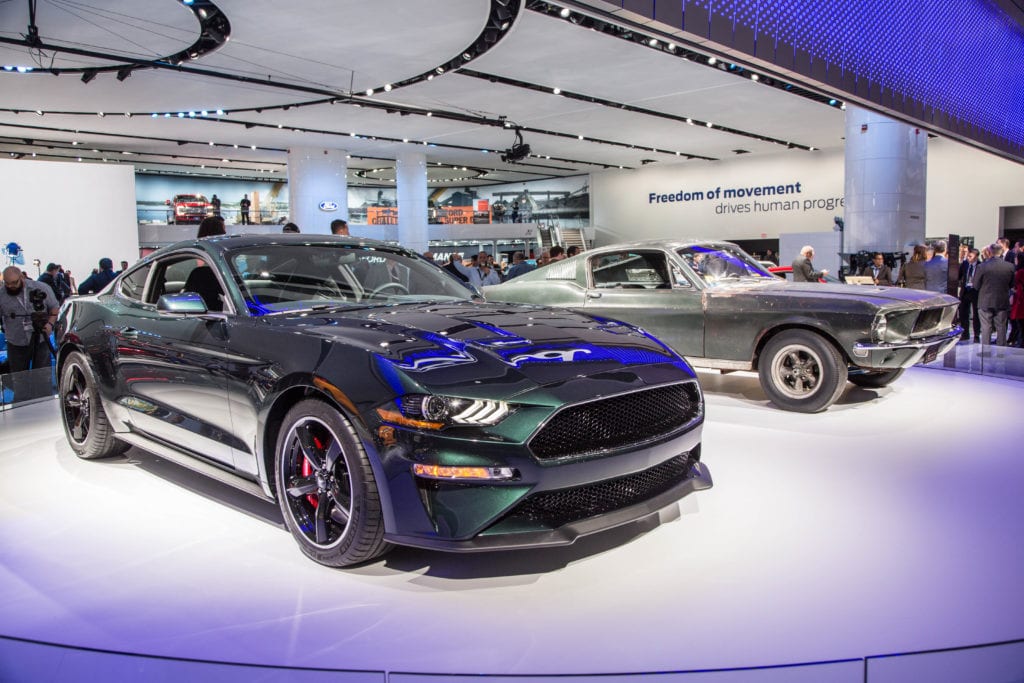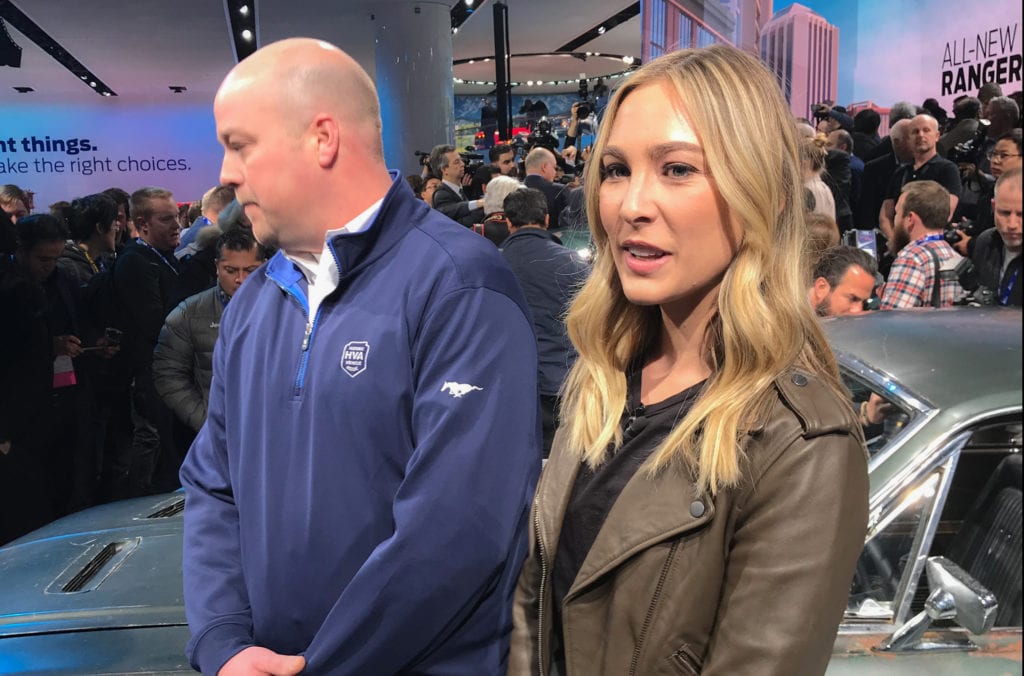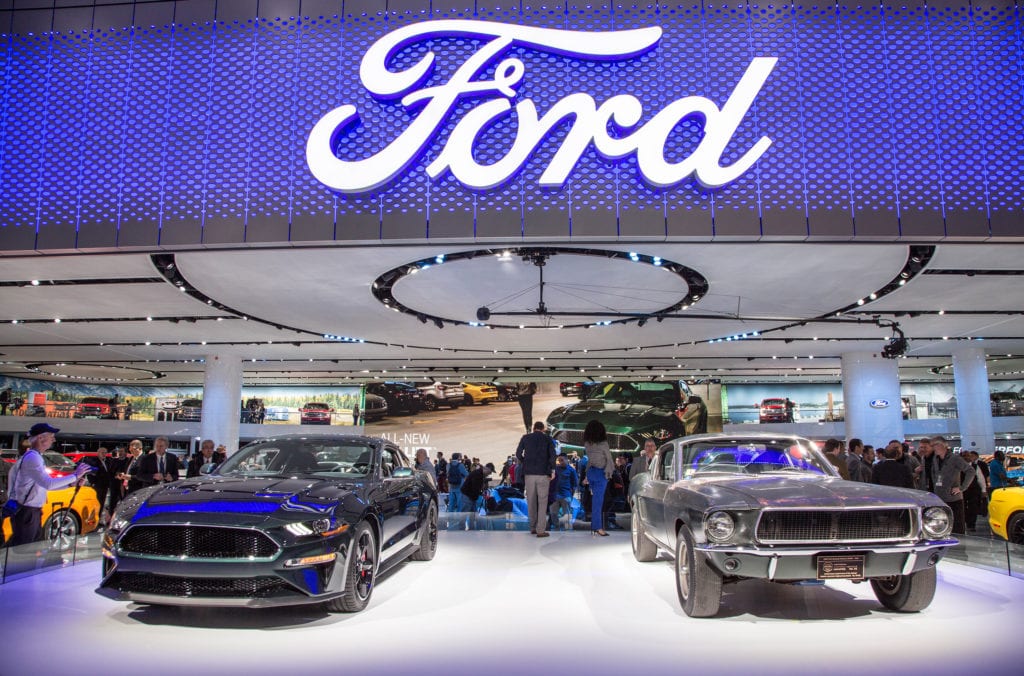Trucks & Mobility – The 2018 Detroit Auto Show

Detroit’s Cobo Hall has two main exhibition floors and at the 2018 Detroit Auto show they featured two different worlds.
Upstairs were the traditional vehicle displays. You would hear words like truck, SUV, horsepower and off-roading. Downstairs were the mobility exhibitions. Now the words floating about were ambient light value, algorithm, Lidar and Michigan State University.
About the only word common to both levels was electric as more and more automakers – Volvo, PSA, Infiniti, Mercedes-Benz, etc. – move their fleet electrification goals into the early 2020s.
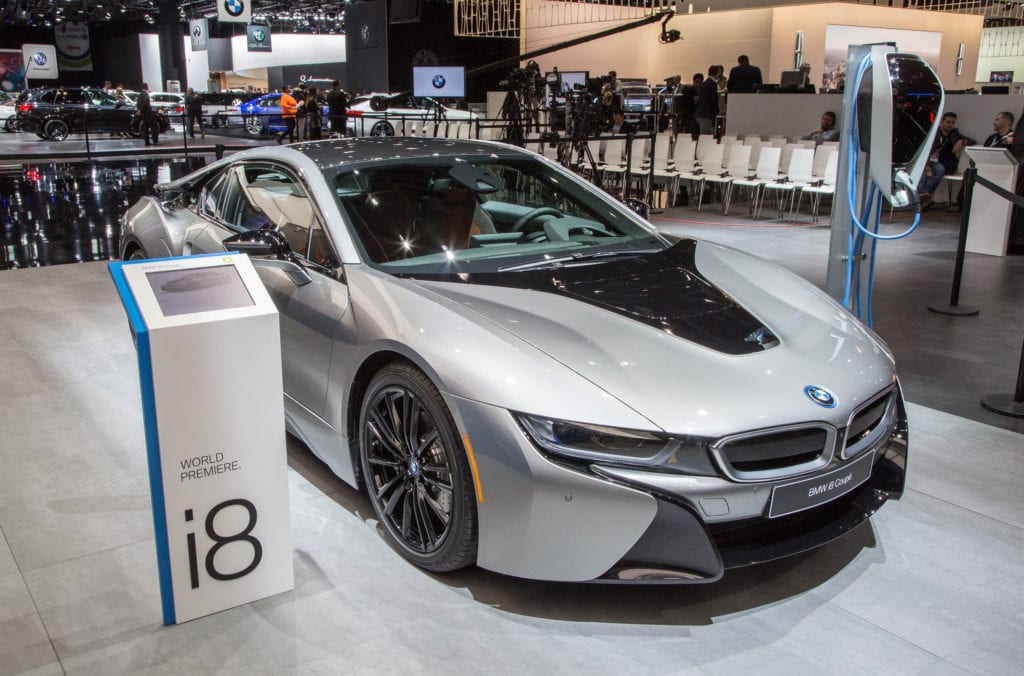
We’ll start upstairs among the traditional show displays, some with setup costs in the millions. While all of the major American manufacturers had a big presence, you won’t find the likes of Mazda, Maserati, Porsche, Land Rover or Jaguar, all of which have begged off the show in recent years. To see any truly exotic cars such as Ferraris, Bentleys and Aston Martins, you have to go a side display put on mostly by local dealers, not the manufacturers.
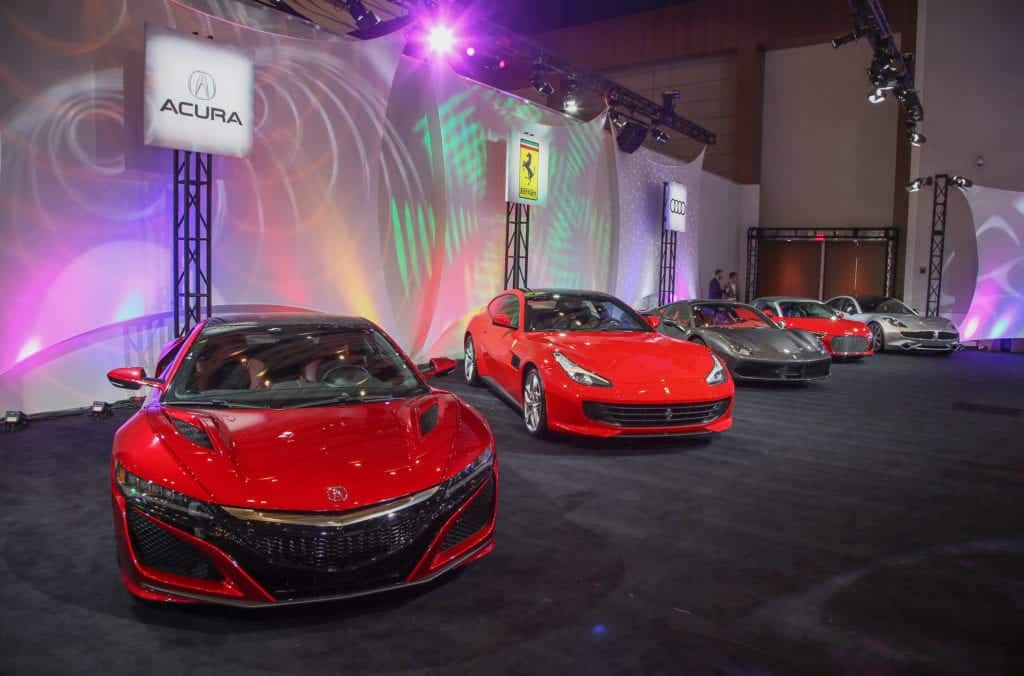
In past years you’d find hordes of journalists traipsing from one press conference to the next. Not so much anymore. Alfa Romeo, Audi and Chrysler had no press conference. Other automakers avoided the hall and press days for their presentations. General Motors’ lone conference was off-site, unveiling Chevrolet’s Silverado pickup truck. Ford covered its corporate lineup the night before the show opened. Ditto with Volkswagen, while a Mercedes-Benz extravaganza debuted its G-Class SUV in the Michigan Theatre, an ornate movie theater turned parking garage that was Henry Ford’s first factory.

Another change is that the automaker’s message is no longer just about single products. Ford’s executive vice president and president of Global Markets, Jim Farley, points out, “Today we have mobility products, automated vehicle technology and electrification coming and an auto show focused on vehicles is not a venue anymore to tell the whole story of the company.”
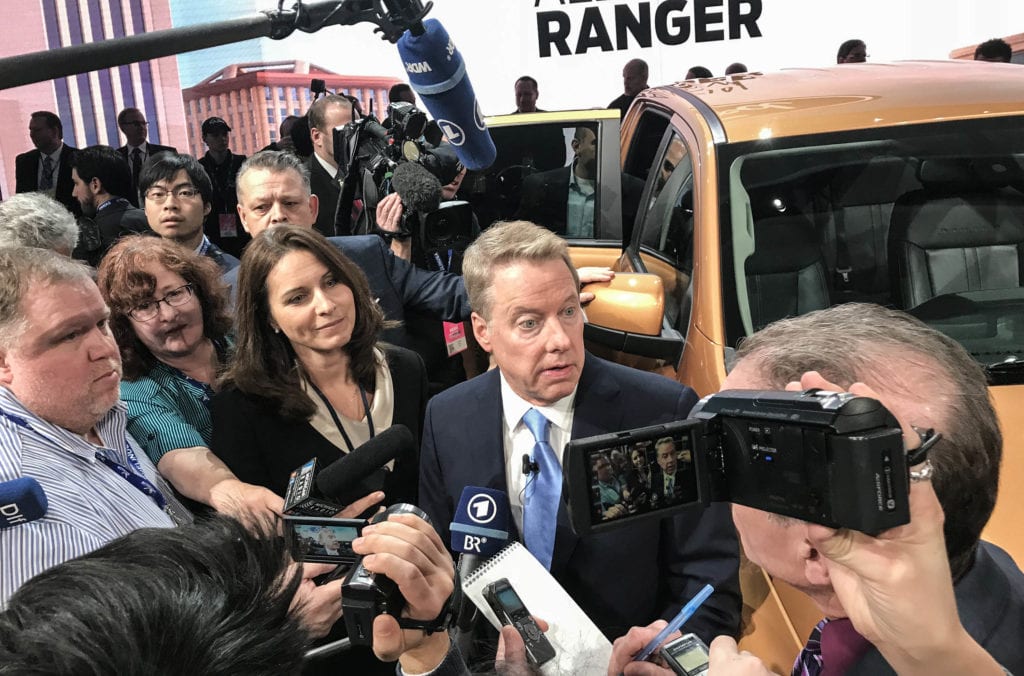
From a media standpoint, huge costs and changing priorities could make auto shows vulnerable to other venues for corporate messaging, from the Consumer Electronics Show to Instagram. The Paris Motor Show, which has seen declining attendance, held a press meeting in Detroit to explain how it is revamping its format, with displays centered around four themes: cars, motorbikes, mobility and technology.
Then there’s the other half of the main hall auto show story: consumers. Farley points out, “The consumer side is still super important.” Shows are a chance for the new car buyer to check out products away from pushy sales people. Or they might be looking for that next vehicle on the Internet and need a neutral shopping environment to get close to the sheetmetal. Some estimates have auto show consumers spending an average of 3.5 hours at the show, much of that shopping.
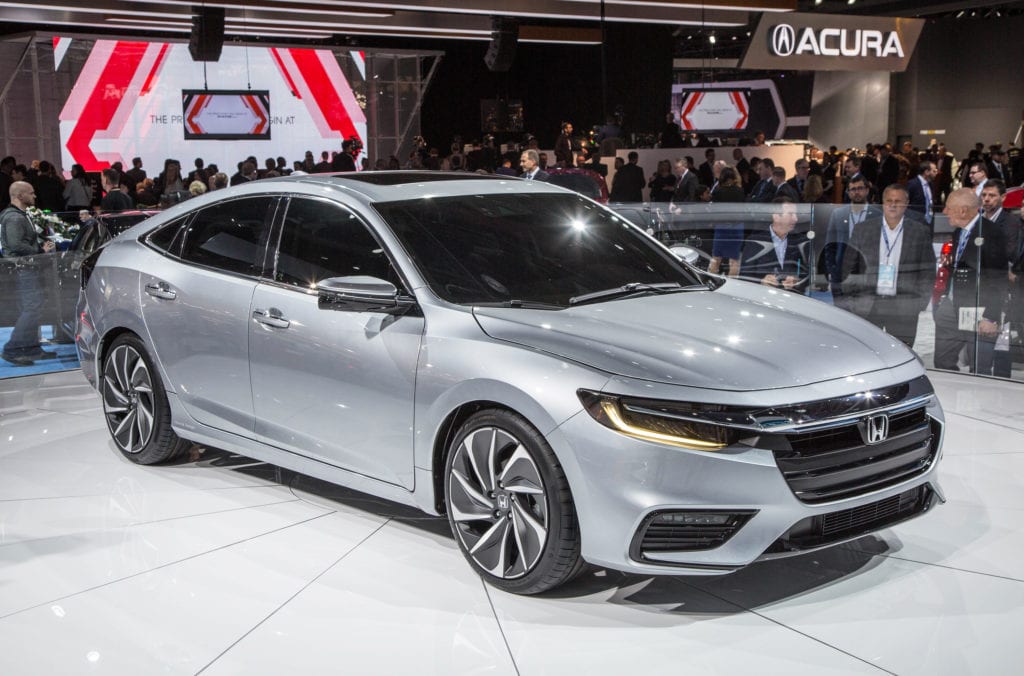
Honda/Acura spokesman Sage Marie explains their approach to auto show and sales. “It’s fishing where the fish are. We know that 60-75 percent of auto show attendees are in-market within the next 12 months. We know they are using auto shows to add or delete brands from their purchase considerations. You need to be there to be on their shopping list.”
Where to be can depend on the automaker. Honda and Acura sell cars through the U.S., so between the companies and their dealers they are at shows large and small. By contrast, Porsche may not have been in Detroit, but has a huge display at the Los Angeles Show, which is in one of its largest markets.
At the Detroit show an automaker can expect its vehicles to be exposed to more than 800,000 visitors. The New York and Chicago Shows claim attendance of more than 1 million. It helps that three of the major consumer shows–Detroit, New York and Chicago–are in the winter when buyers have more time on their hands.
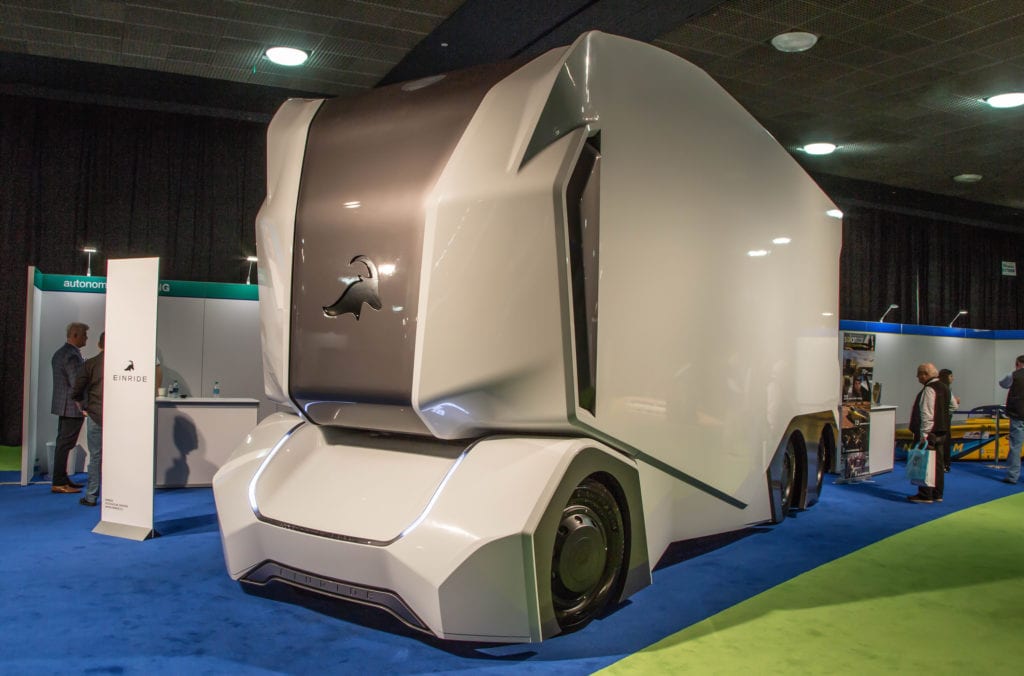
Now, downstairs to the much more dimly lit mobility show with its dozens of small meeting stands. If upstairs is a circus, this is a library. Quiet with many people huddled over computers. Autonomy demos. A solar race car. Michigan State University’s mobility car festooned with Lidars. An all-electric small semi so autonomous there is no driver’s cab. Wayne State University’s Formula SAE Warrior Racing car.
Quiet for certain, but one gets to wondering how soon all of this brain power, youth and foresight will be found upstairs in the circus.
